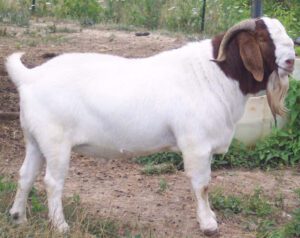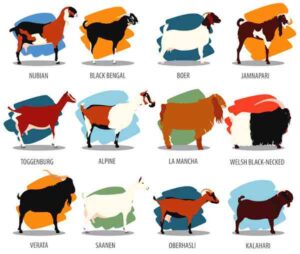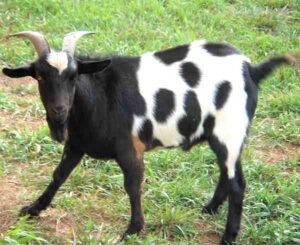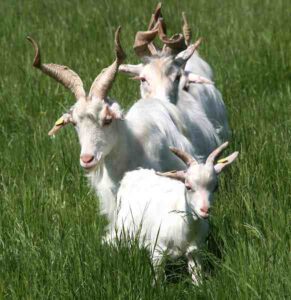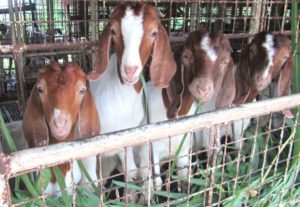Along with providing adequate food and good housing, grooming a goat is also very important. Good goat care also include regular grooming and it is not limited to just providing housing, feed and water.
Regular grooming is not directly related to goat farming and better production. But it helps to feel your goats more comfortable, which indirectly ensures good health, proper growth and maximum production.
Doing some extras for your goats will ensure good health, better growth and best production. Regular grooming can help to eradicate potential health issues of your goats in the bud and prevent them from escalating.
How to Start Grooming A Goat?
Grooming a goat also help to observe your goats closely and it creates a bond between you and your animals. You can examine the skin of your goats, hooves and the rest of their body.
Grooming also helps to observe or determine whether your goats have any health problems or not. However, read more about grooming a goat.
1. Supplies for Grooming a Goat
Curry comb, brush (hard and soft),comb for beards and tails and hoof trimmer are required for basic goat grooming. If your goats need rinse and a good scrub, a bath mitt will be very effective.
You can also buy a set of electric clippers. Those are very useful for trimming your goat’s tails or just neatening up their appearance.
2. Grooming a Goat by Brushing
Regular brushing is the most important part of grooming a goat. Brush your goats on a regular basis, except the feeding time. For getting mud and surface dirt off, use the hard brush.
And for getting out the less obvious soil, use the curry comb. A vigorous currying acts as a gentle massage and brings dirt to the surface.
Use soft brush for finishing task and it also helps distributing oils throughout the coat of your goats. Try to feel your goat’s body with your hands and look for bumps and lumps, if they have any.
Bumps and lumps could be a parasitical skin infestation or wounds. Use brush in wounded places very carefully.
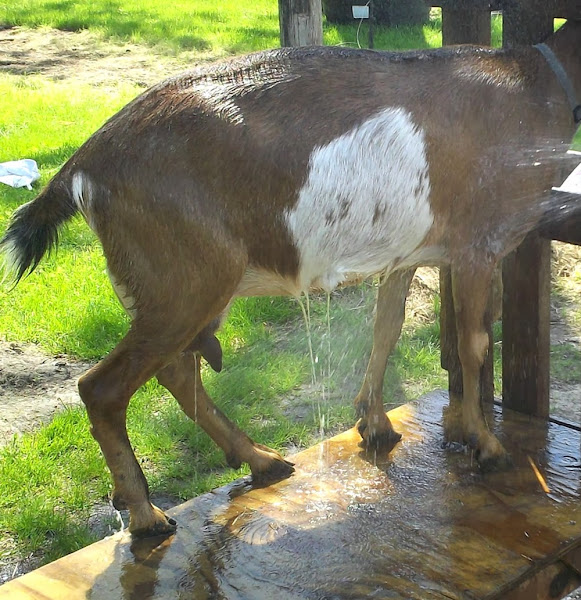
3. Grooming a Goat by Bathing
Usually goats don’t like to have bathe. But if they are affected by external parasites, then bathing can help to remove those parasites.
Bathing remove the common goat parasites like lice and makes clipping easier and keeps the clipper blades sharp for a longer time. For bathing, use slightly warm water instead of natural water.
Because goats prefer to be washed with warm water. No need to use warm water in warmer seasons. For bathing your goats just wet the goat, use an animal or goat shampoo and rinse.
Use a collar while bathing a goat and keep another goats far. Be very careful while bathing the baby goats.
4. Grooming a Goat by Clipping
Clipping your goats after a certain period helps to feel them more comfortable. Longer hair help them to keep their body warm in winter season and prevent them from clod weather.
Shorter hair helps your goats to stay cooler in warmer season and allows sunlight to reach their body or skin and it keeps the lice and other critters away.
Clipping your goats after winter season and during the beginning of summer season is always a good idea. But if you want to show your goats, then you can do clipping at anytime.
Try to learn more about clipping from an experienced person, if you have never clipped a goat before. Use sharp blades for clipping depending on the season, length and texture of your goat’s hair.
Never body clip your goats during the weather is still cold. Your goats will feel better and look much neater if you can perfectly cut the hair on their udder, belly, thighs and tails.
Shave off the beard of a doe and cut the hair inside your goat’s ears. Your goats will feel more comfortable by body clipping during warmer weather.
5. Grooming a Goat by Trimming Hooves
Naturally goats climb, jump and run all over the place throughout the year. Although all those activities depends on the condition of their hooves.
Trimming your goat’s hooves can be very difficult for you, especially if you are a beginner. So it will be better if you contact with an experienced person and learn how this process done.
Your goats can become lame if you cut too much hoop at once and over grown feet can also make your goats lame. Trim the over grown feet gradually, not all at once. After the feet of your goats are nicely balanced, trim their feet regularly after every 6 to 8 weeks.
Look for any sticks or rocks lodged in the bottom of your goat’s hooves. If there any, remove it. And also look for any foul odors on their hooves. Foul odor causes due to foot rot. Contact with your vet if you notice foot rot in your goats.
Start Grooming A Goat
Follow the steps mentioned below for grooming a goat:
- Start by brushing your goat thoroughly with a stiff-bristled brush. This will help to remove any loose hair, dirt, and debris from its coat. Be gentle and avoid brushing too hard, as this can cause discomfort to the goat.
- Use a pair of scissors or clippers to trim the hair around the goat’s hooves. This will help to prevent dirt and debris from accumulating around the hooves, which can lead to infections.
- If your goat has long hair, you may need to trim it to prevent it from becoming tangled or matted. Use a pair of scissors or clippers to carefully trim the hair, being careful not to cut too close to the skin.
- Clean your goat’s ears by wiping them with a damp cloth or cotton ball. This will help to remove any dirt or wax that may have accumulated in the ear canal.
- Use a pair of clippers or scissors to trim the hair around your goat’s eyes. This will help to prevent the hair from irritating the eyes and causing infection.
- Check your goat’s teeth and trim them if necessary. Overgrown teeth can cause discomfort and lead to dental problems.
- Finally, give your goat a bath if necessary. Use a mild soap and warm water to clean its coat, being careful to avoid getting water in its ears or eyes.
Hope this guide has helped you. Consider sharing it with your friends and family members if you find it helpful. Good luck and may God bless you!
